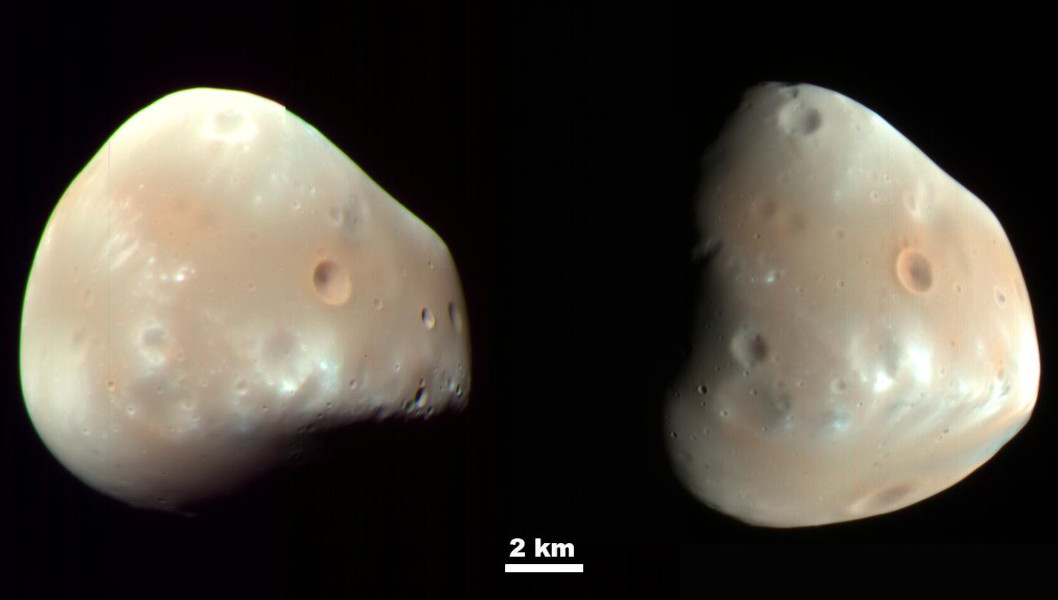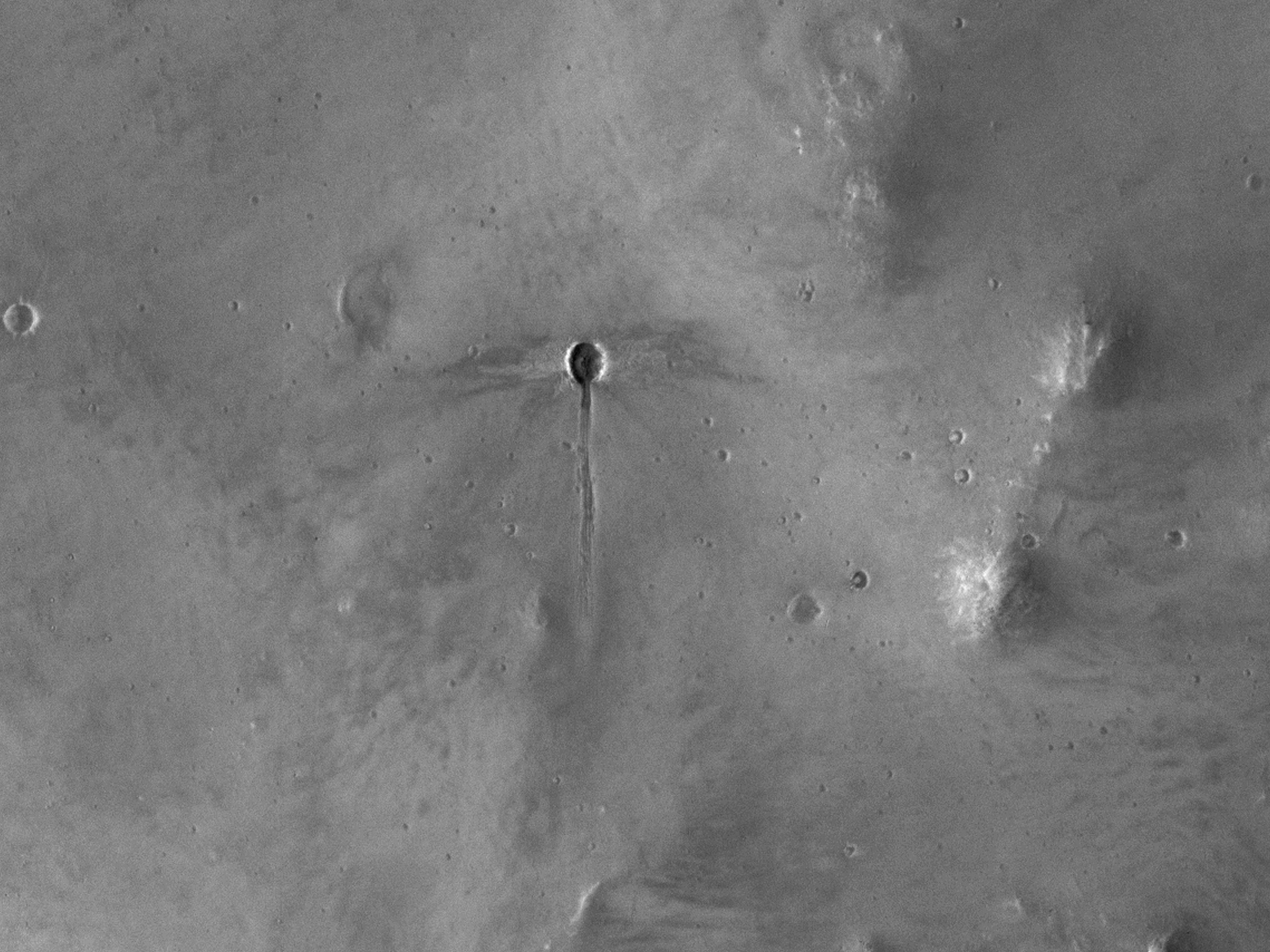"Terrorizing Mars" (Astronomy Picture of the Day), now with dragonfly bonus
https://apod.nasa.gov/apod/ap240907.html
(many more links at source)
Astronomy Picture of the Day
Discover the cosmos! Each day a different image or photograph of our fascinating universe is featured, along with a brief explanation written by a professional astronomer.
2024 September 7
 Small Moon Deimos
Small Moon Deimos
Image Credit:
HiRISE,
MRO,
LPL (U. Arizona), NASA
Explanation: Mars has two tiny moons, Phobos and Deimos, named for the figures in Greek mythology Fear and Panic. Detailed surface views of smaller moon Deimos are shown in both these panels. The images were taken in 2009, by the HiRISE camera on board the Mars Reconnaissance Orbiter spacecraft, NASA's long-lived interplanetary internet satellite. The outermost of the two Martian moons, Deimos is one of the smallest known moons in the Solar System, measuring only about 15 kilometers across. Both Martian moons were discovered in 1877 by Asaph Hall, an American astronomer working at the US Naval Observatory in Washington D.C. But their existence was postulated around 1610 by Johannes Kepler, the astronomer who derived the laws of planetary motion. In this case, Kepler's prediction was not based on scientific principles, but his writings and ideas were so influential that the two Martian moons are discussed in works of fiction such as Jonathan Swift's Gulliver's Travels, written in 1726, over 150 years before their discovery.
Tomorrow's picture: large galaxy Andromeda
==========
https://hirise.lpl.arizona.edu
 HiRISE PICTURE OF THE DAY: 7 SEPTEMBER 2024
HiRISE PICTURE OF THE DAY: 7 SEPTEMBER 2024
A Dragonfly-Shaped Crater
This “winged” ejecta is very common for craters formed at low impact angles.
More information from JPL:
https://www.jpl.nasa.gov/images/pia21454-a-dragonfly-shaped-crater

